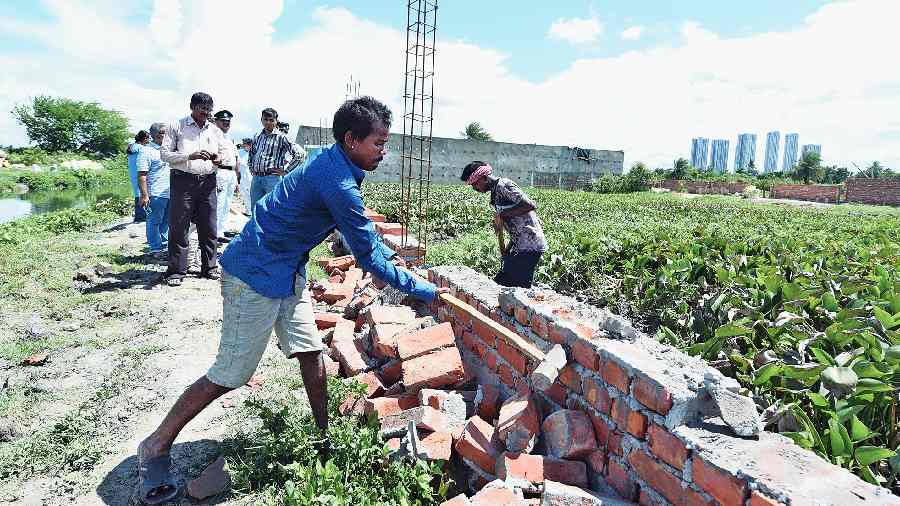The state government on Thursday pulled down an “illegal construction” in the East Kolkata Wetlands, but there are still 351 FIRs against illegal encroachments on the protected zone.
An official of the East Kolkata Wetlands Management Authority (EKWMA) said the illegal structures had been demolished in less than 10 per cent of the 351 cases. In some cases, water bodies have been filled.
The Telegraph spoke to government officials and environment activists to find out how deep the problem is and what can be its impact on Kolkata.
Pile of complaints
The state environment department has filed 351 FIRs but the number of encroachments is far higher, said an EKWMA official.
Officials said it was not possible for them to scan the 12,500-hectare wetlands and often encroachments go unnoticed.
Bonani Kakkar, an environment activist who has been fighting against wetlands encroachments, said illegal construction or illegal conversion of land-use increased manifold during the pandemic.
“During the pandemic, NGOs and common people who would report any instance of illegal encroachment or filling up of water bodies could not visit the place. As a result, illegal activities increased,” she said.
The highest number of encroachments were reported from parts of the wetlands neighbouring Bantala and Sonarpur.
Inadequate action
The wetlands authority had in 2014 lodged an FIR against the construction of a two-storey building in the Dhapa mouza, located close to where the wall was demolished on Thursday. The building still stands, though further construction has stopped.
Officials said the plot where the building stands is not classified as “settlement” in the land records.
The East Kolkata Wetlands have been classified into three categories — settlements, where human habitation is allowed; agricultural land; and water bodies.
The building against which the FIR was filed is under the South 24-Parganas district administration. An EKWMA official said it was the district administration’s job to pull down the building.
South 24-Parganas district magistrate Sumit Gupta, who took charge about a month ago, said: “I will look into this matter and take necessary action.”
The wetlands fall under the Kolkata Municipal Corporation (KMC) and the South 24-Parganas administration.
“We forward the complaints to the district administration or the KMC. The illegal structures have to be pulled down by them,” said the EKWMA official.
The worry
The destruction of the wetlands will mean a death blow to Kolkata and areas far beyond, said Arunabha Majumder, a retired professor of sanitation engineering.
Majumder, also an expert member (wetland ecology) of the EKWMA, said the wetlands treat 910 million litres of the city’s sewage daily for free through a natural process.
“Imagine the mammoth cost the city has to bear to build and maintain sewage treatment plants for treating this volume of sewage,” he said.
“Kolkata’s markets get low-cost vegetables and fish that are grown in the wetlands area.”

